launched this expedition, it was tony who'd made our huge discovery... and that i wasn't really needed.
or at least that was till i looked up from the ground...
`
not to downplay tony's find, for after all is was an amazing find, but suddenly my own discovery took his huge find and turned it into a ginormous one! a find tony won't have made without me... meaning it was a real team effort!
`
looking up at the badlands around me, the funny feeling i'd seen them before. which was impossible. i'd never been to the monarch site before...
this puzzled me for a minute, until till i realized it didn't seem familiar in the sense that i'd been here before. rather i'd simply seen this somewhere before...
`
then it hit me. it was from
a photo i'd seen, a photo i had a copy of in my pocket!!!
`
this photo right here...
one of two men;
eli hexton (holding the camera) and
francis slate (swinging the pick axe), taken in 1913. it is the sole record of this they worked 96 years ago, but back then they suspected contained multiple
albertosaurs.
`
the sole purpose of my whole search across the red deer river valley was to find more sites of this the most elusive fossil hunter of
the great canadian dinosaur rush,
francis slate... which i had just done...
`
i'd found a lost quarry of francis slate!!!
`
take a close look at this photo from 1913 then scroll back up to the picture of me in the present, and see if you can tell how i figured out i was in the right spot. don't cheat and look at the next picture!
`
now sadly i was sooooo excited about all this that my attempt at taking the modern version of the slate photo didn't turn out (i was so hyper that i couldn't hold the camera still, and they all turned out blurry...). however the one photo of me looking at the site has all the clues you need to ID the site...
`
if you are having trouble (which isn't helped by my modern photo having a slightly different angle) than here is how i did it.
`
 i'd
i'd matched up all the modern landmarks with the ones from the 1913 photo. funny enough despite the difference in angle, my head is covering up the same section of hills that
francis slate is standing in front of in his era. you can also see the spot he is digging on to my right.
now a lot of the detail won't be clear in a small version of the diagram, so you'll want to look at a larger version. i can never tell if blogger will allow my pictures to be enlarged by clicking. if it doesn't work for you, here is
a link to mega large version of this comparison diagram.
i couldn't wait till the end of the day to report this. we immediately went back to the
tyrrell museum and grabbed
the lost quarry expert,
darren tanke, to show him what we'd just discovered.
getting back to the site, and showing him,
darren turned to me "
you've turned out to be quite the pupil traum," he complemented me comparing the photo to the skyline. "
i never would have thought anyone could go from learning the basics of how to find a lost quarry and then go track down a slate locality a only a few days! even i have had trouble finding slate digs!!!"
if i was a mammal
i'd have blushed at being complimented by the legendary
tanke. good thing
i'm not a mammal!
darren then turned his attention to the tony side of our discovery. the obvious remains of an albertosaur. most obvious of all were these two teeth.
at first glance a palaeontologist could dismiss these as simply evidence of albertosaur scavenging on the bonebed. after all meat eating dinosaurs shed teeth all the time (and 3 out 5ish bonebeds tend to have theropod teeth if you look hard enough!).
`
however that top tooth wasn't your ordinary tooth. you'll notice compared to the bottom one it is way bigger, and is thicker. that is because the top tooth still had its root attached. which either meant this albertosaur was REALLY sick or injured while alive, and thus lost tooth and root (as normally roots stayed in the jaw to be reabsorbed when a tooth feel out... no point in wasting all that energy), OR it had fallen out after the albertosaur had died (which was a LOT more likely as the soft tissue holding the rooted tooth in the jaw decomposed...).
darren was very excited by this find.
`
of all the slate quarrys around the drumheller area (slate operated in over a dozen areas of western canada from what we can gather) this was the one darren had most wanted found. it was not only one of francis slate's first recorded operations, but one on a find that could be of enormous scientific importance still today!
it also excited darren as it reminded him of the lost barnum brown albertosaur bonebed that he'd relocated in 1997. "the best of times," darren assured me and tony in a fond recollection, that this site clearly stirred.
 darren
darren was concerned for the condition of the bones at the surface. "
the museum will definitely do a thorough excavation on this site soon, but we don't want the already exposed bones suffering any more damage. especially if this bed has been heavily eroded in 96 years, we might have lost a lot of bones to erosion since slate was here!" so he pulled out a bottle of glue.

we spent the next 20 minutes carefully pouring a few coats of adhesive glue onto the bones to help hold them together, and strengthen them against the erosional elements...

though sadly not all the (exposed) bones were in great shape. i glued this one as best i could, but there wasn't a lot of it left sadly.
`
darren assured me he was confident that there'd be more bones under the surface. those unknown bones, having been protected from the harsh conditions, would be in pristine condition we the museum came out to uncover them. hopefully then darren and the museum's palaeontologists would be able to confirm if this was the multiple albertosaur bonebed slate had claimed it was (and thus possibly further evidence of pack hunting in tyrannosaurids), or something else entirely.
`
as we concluded this rather epic day, and headed back towards the car, i turned to darren. "how does it feel? you know when you find a lost quarry?"
`
"what do you mean?" he asked totally puzzled.
it was hard to describe the feeling welling through me right then.
`
i think darren thought i was boasting or something, but that certainly wasn't it... no, but how to describe it?
`
in desperation i turned back to the quarry one last time, and gazing on that single spot it hit me...
`


 i'd matched up all the modern landmarks with the ones from the 1913 photo. funny enough despite the difference in angle, my head is covering up the same section of hills that francis slate is standing in front of in his era. you can also see the spot he is digging on to my right.
i'd matched up all the modern landmarks with the ones from the 1913 photo. funny enough despite the difference in angle, my head is covering up the same section of hills that francis slate is standing in front of in his era. you can also see the spot he is digging on to my right.


 darren was concerned for the condition of the bones at the surface. "the museum will definitely do a thorough excavation on this site soon, but we don't want the already exposed bones suffering any more damage. especially if this bed has been heavily eroded in 96 years, we might have lost a lot of bones to erosion since slate was here!" so he pulled out a bottle of glue.
darren was concerned for the condition of the bones at the surface. "the museum will definitely do a thorough excavation on this site soon, but we don't want the already exposed bones suffering any more damage. especially if this bed has been heavily eroded in 96 years, we might have lost a lot of bones to erosion since slate was here!" so he pulled out a bottle of glue. we spent the next 20 minutes carefully pouring a few coats of adhesive glue onto the bones to help hold them together, and strengthen them against the erosional elements...
we spent the next 20 minutes carefully pouring a few coats of adhesive glue onto the bones to help hold them together, and strengthen them against the erosional elements... though sadly not all the (exposed) bones were in great shape. i glued this one as best i could, but there wasn't a lot of it left sadly.
though sadly not all the (exposed) bones were in great shape. i glued this one as best i could, but there wasn't a lot of it left sadly.


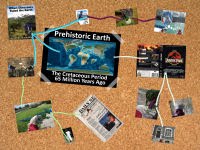
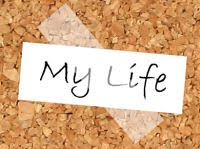

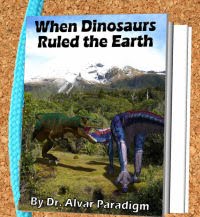


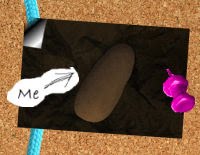





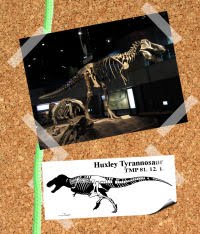








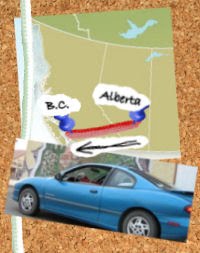






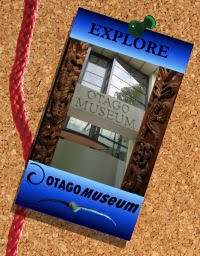




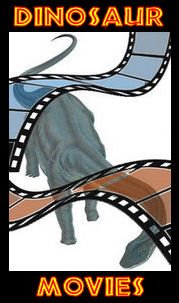






3 comments:
The root looks like a scapula! Is it supposed to wide and flat, or is that because of crushing?
Well to start off with this post is obviously fictitious. It is a realistic simulation of finding a lost quarry, but this one is of course a made up fossil hunter and dig.
Myself and Tony were revisiting a bonebed that the Tyrrell education department had once used for a guided hike. Since the site had been in disuse for a couple years erosion had begun to reveil some cool new things at the site (somehow the best stuff would wander off when visitors were at the site... wonder how that was happening?)
Tony found those two Albertosaur teeth eroded out of the hill less than a metre from where I used to stand to deliever my program! (meaning I probably stood on them [buried mind you] dozens of times!).
We realized that the rooted tooth was something a bit out of the ordinary, and so I brought Darren Tanke out to check them out.
Unlike in this post, it turns out these were loose teeth, and NOT part of a theropod bone bed.
Why those roots look so unusual is that they were shed with the tooth!
For whatever reason that poor Albertosaur lost the teeth AND those roots on that day!
So the flarring of the roots towards the bottom is not due to crushing, but rather it is the whole tissue system that would have anchored the tooth to the jaw. Just mormally most of it of course stays in the mouth, and thus we're not used to seeing them on fossil teeth like this.
Poor Alberto is all I have to say. It must have been painful!
Wow. That must've sucked for the animal!
Post a Comment